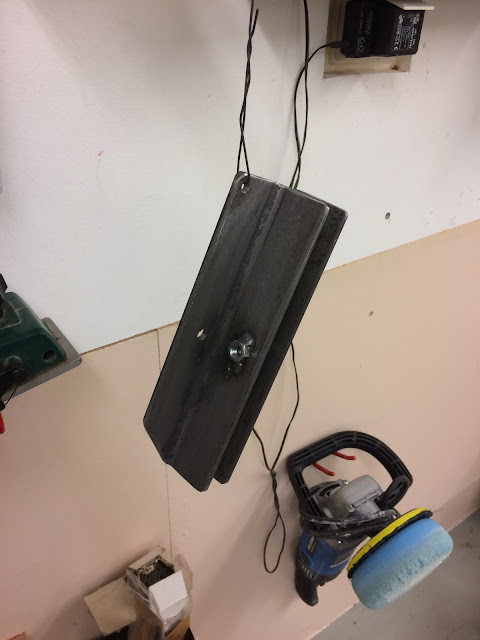Here I have installed runners in chocks as that is needed for measuring to make sure runners are in parallel.
The left side runner is fastened with one bolt to enable adjustment. I use a measurement stick to measure that runners are parallel. Once runners are parallel the two last fastening holes are drilled.
It would probably be possible to use laser or something else fancy to measure parallelism! An advantage of this method other than that it is very simple is that it is the parallelism of the sharpened edges that is measured.
After checking the measures its time to drill the remaining fastening holes.
Runner plank ready!
Not so much to say about front runner chock fastening! M8 bolt holding chock in place and acting as shaft for steering.





















































